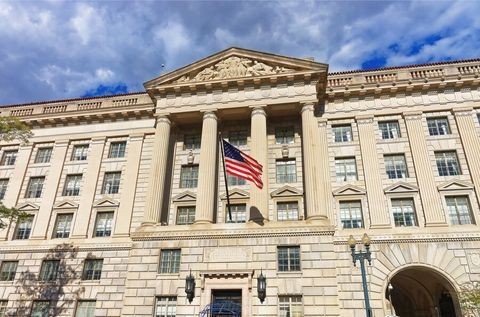PFAS Is Officially Subject to The "Toxic Release Inventory" – and Affected Facilities Should Get Their Ducks in a Row
Client Alert | 2 min read | 02.13.20
The federal government is imposing one of the first environmental requirements for per- and polyfluoroalkyl substances (PFAS), and industry must plan accordingly.
Under an obscure provision of the National Defense Authorization Act for Fiscal Year 2020 (NDAA), Congress directed the U.S. Environmental Protection Agency (EPA) to list certain PFAS under Section 313 of the Emergency Planning and Community Right-to-Know Act (EPCRA). Specifically, Section 7321 of the NDAA mandated that 14 specific PFAS plus any additional PFAS that meet certain criteria be listed as “toxic chemicals” that are subject to the annual Section 313 reporting requirement. EPCRA Section 313 (also referred to as the Toxic Release Inventory or TRI) imposes reporting obligations on facilities involved in industries identified by certain SIC codes (largely covering facilities in the manufacturing, mining, and power sectors). Specifically, if a covered facility manufactures, processes or otherwise uses a listed toxic chemical above an applicable threshold quantity, the facility must annually report to EPA environmental releases of and other waste management activities relating to that toxic chemical.
EPA published a list of 160 PFAS that the agency has added to the EPCRA Section 313 toxic chemical list, effective January 1, 2020. EPA’s list includes two forms of PFAS that have been detected in the environment (perfluorooctane sulfonic acid (PFOS) and perfluorooctanoic acid (PFOA)), as well as others that the NDAA specifically identified or that EPA found to meet the criteria listed in Section 7321 of the NDAA (i.e., they are considered an “active” chemical substance under the Toxic Substances Control Act (TSCA) and are also the subject of certain “Significant New Use Rules” under TSCA).
Reports for these chemicals will be due by July 1, 2021, for calendar year 2020 data, and they must be submitted annually thereafter. Covered facilities that manufacture, process or otherwise use more than 100 pounds of a listed PFAS, calculated over the entire calendar year, must submit the required Section 313 report (referred to as “Form R”). Bear in mind that under EPCRA Section 313, “manufacturing” includes the manufacturing of a byproduct in waste, and the reporting obligations apply regardless of whether or not there is any release. Thus, it is not enough for a covered facility to just determine that it does not purchase and use a listed PFAS and to confirm that it does not produce a listed PFAS for sale. The facility must also determine if its operations generate PFAS as a byproduct.
Covered facilities should get their ducks in a row. In anticipation of the July 1, 2021 reporting deadline, covered facilities must begin now to determine whether the chemicals or chemical mixtures they handle include a listed PFAS, and if so, gather data to support reporting or the conclusion that reporting is not necessary. It is worth noting that information from these TRI reports will, generally, be published by EPA. Companies should consider whether and to what extent they wish to claim confidentiality of the information.
Contacts
Insights
Client Alert | 4 min read | 09.20.24
Department of Commerce Unveils New Tool to Inform Supply Chain Risk Mitigation
The U.S. Department of Commerce unveiled a groundbreaking analytic risk assessment tool to inform the U.S. government’s efforts in mitigating supply chain risks. Launched at the inaugural Supply Chain Summit hosted by the Department of Commerce and the Council on Foreign Relations on September 10, 2024, the SCALE Tool marks a significant milestone in the U.S. government’s broader commitment to strengthening the U.S. supply chain ecosystem.
Client Alert | 3 min read | 09.13.24
Client Alert | 12 min read | 09.13.24
Tri-Agencies Finalize NQTL Comparative Analysis Standards in Final Rule
Client Alert | 5 min read | 09.11.24




